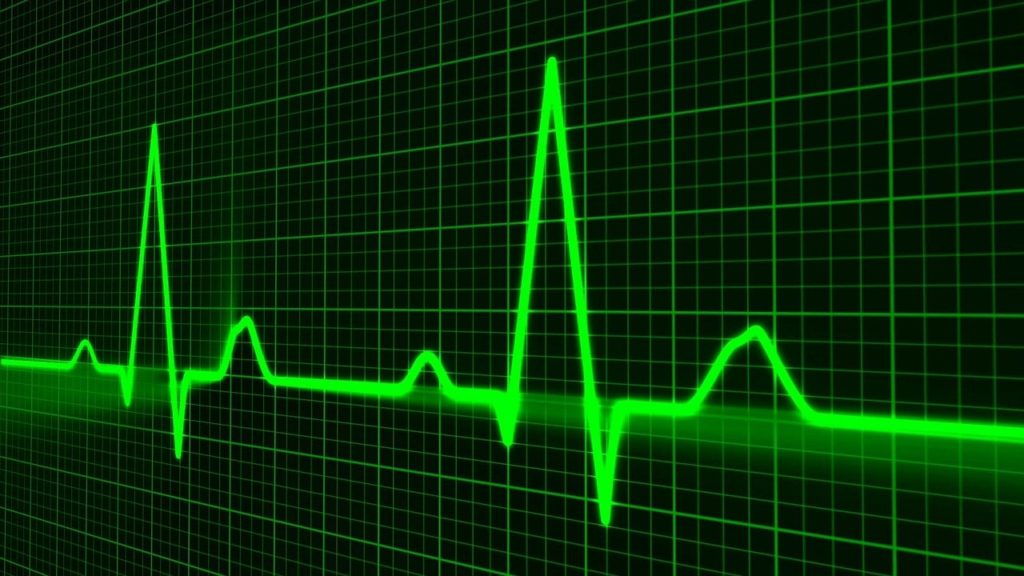Medical Costs impact us all. The statistics are sobering. How prepared are you for the possibility of a one time medical issue?
Did you know that over a half a million Americans file for bankruptcy every year because of medical bills? Or that US medical bills are responsible for 66.5% of all American personal insolvencies? These are the facts and statistics about medical bankruptcies that opened my eyes this week.
(Balancing Everything)

1. The total medical debt in the United States in 2020 totaled $45 billion.
A study by Credit Karma reveals that the total medical debt in the US was $45 billion. This information was based on the credit reports of over 20 million Americans. The same medical debt statistics established that medical debt rose 3% from the moment the COVID pandemic started until August 2020 when the research was conducted.
(USA Today)
2. Every year about 530,000 families file for bankruptcy due to healthcare bills.
For hundreds of thousands of American households, it is easier to file for bankruptcy than to deal with medical costs. Medical-related bankruptcies, according to a Nasdaq article, are killing the middle class in the USA. The author mentions other details about medical debt like a Nobel laureate who paid healthcare bills by selling his medal. It also stated that over 250,000 people seek help to pay medical bills through the GoFundMe crowdfunding service.
(Nasdaq)
3. Medical indebtedness is the number one cause of bankruptcies in the US.
About 62% of people highlight healthcare bills as the leading cause of bankruptcies in America. It’s more shocking to note that over three-fourths (78%) of those people had some type of insurance, medical bankruptcy statistics show. This number indicates that medical bankruptcies with insurance are a real thing in the USA.
(Investopedia)
4. Almost 20% of all consumer credit reports include one or more collections originating from healthcare.
About 19.4% of American consumer credit reports contain medical or healthcare-related collections. Regarding the composition of collections tradelines or credit reports by type of creditor, 52.1% are associated with healthcare providers. The median collections amount among creditors of this type is $579.
(CFPB)
5. More than half of all Americans think medical treatments cause more problems instead of solving them.
Medical debt statistics reveal that 51% claimed that medical treatments create more problems due to their soaring costs. Meaning, even if the health issue is resolved, Americans are often left with huge bills and debt. About 48% said the value of medical treatments in the USA was worth it. In the same research, PRC established that 83% of the participants claimed that quality medical care was unaffordable.
(Pew Research Center)
6. Almost half of Americans worry that a major medical issue can lead to filing for bankruptcy.
About 45% of US citizens think they would go bankrupt if faced with a significant health issue, according to medical bankruptcies statistics. Still, a higher share (48%) believe that the USA has the best healthcare in the world. Consumer Affairs also discovered that over three-fourths (76%) of Americans believe that the medical costs in the country will keep rising.
(Consumer Affairs)
7. In March 2020, healthcare was the most serious issue for about 11% of Americans.
Despite the soaring costs of medical treatment in the United States, healthcare isn’t the most serious issue among Americans. Only 11% highlighted healthcare as their biggest concern in March 2020. Compared to the other months, however, it’s notable that more and more people worry about healthcare. Facts about medical debt show that only 5% highlighted this as the most serious issue in September 2019.
As for what worries Americans the most, 27% said the government and poor leadership. About 13% pointed out diseases and COVID-19 in particular as their primary concern. About 13% of the Gallup survey participants said that they worry about the economy, unemployment, and federal debt.
(Gallup)
8. The percentage of American households that struggle with medical bills debt dropped by 6% between 2011 and 2018.
In 2011, about 20% of American families couldn’t afford to pay medical bills. The 2018 medical debt statistics show that this percentage decreased to 14% over the seven-year period. Still, the number of medical bankruptcies by year in the US has been roughly the same. The author points out that families that don’t struggle with healthcare bills have better financial health and quality of life. As for who is the most affected by medical debts, the article points to African Americans (21%), children (16%), and women (15%).

(U.S. News)
9. Americans spend an average of $10,000 on healthcare costs per year.
The average American medical bills per day are $5,220 and the average annual nursing home rates are about $97,450. These soaring expenses are the main reason why so many Americans file for medical-related bankruptcy. In 2019, people in the USA spent over $3.8 trillion on healthcare.
(Debt, Advisory)
10. Americans making under $50,000 a year struggle the most with medical debts.
This comes as no surprise as people with the lowest spending power are those most affected by unexpected medical bills. The KFF/NYT medical bankruptcy statistics reveal that 37% of those who make less than $50,000 struggle with medical bills debt. Among Americans who earn between $50,000-99,999, only 26% reported difficulties paying healthcare bills.
Finally, only 14% of those who make $100,000 or more struggle with healthcare debt in the US. So, the situation here is opposite to the one with credit card balances. Namely, the latest credit card debt statistics show that those making the most money owe the most in this type of debt.
(Kaiser Family Foundation/New York Times)
11. Medical bills bankruptcy statistics show that one-time events contribute to most medical bill problems among Americans.
A large percentage of bankruptcies due to medical bills result from one-time emergencies. About 66% said their medical debts came from a one-time or short-term medical expense. About 33% cited chronic illness as the reason behind their medical-related indebtedness, with diabetes and cancer the most common. Only 2% of the participants either didn’t know or refused to answer.
(Kaiser Family Foundation/New York Times)
12. Most Americans struggle with medical bills for their own healthcare expenses.
Medical debt statistics show that among the people who couldn’t pay their healthcare expenses, almost three-fourths dealt with their own bills. While 73% had personal medical expenses to worry about, 33% said they were struggling with medical costs for a spouse/partner. About 25% were parents dealing with high healthcare expenses for their child. Only 10% responded that their medical debts came from bills for other family members.
(Kaiser Family Foundation/New York Times)
13. Most Americans accrue debt from doctor visits and diagnostic tests.
About 65% of participants in the KFF/NYT study said that doctor visits were responsible for their debt. Medical bankruptcies statistics show that only 9% responded that doctor visits represented the largest share of medical bills they couldn’t pay. The situation was similar with diagnostic tests. Namely, 65% said they struggle to pay such medical bills, and 11% highlighted them as the largest share of problematic expenses.
Other notable mentions include lab fees (64%), emergency room (61%), and prescription drugs (51%). The list goes on with outpatient services (49%), hospitalization (49%), dental care (41%), and some other type of medical services (15%). Nursing home and long-term care are at the bottom with only 4%.
Facts about medical debt show that emergency room expenses (21%) and hospitalization (20%) represented the largest share of bills Americans couldn’t pay. About 13% also pointed to dental care as their primary source of medical indebtedness.
(Kaiser Family Foundation/New York Times)
14. The largest share of individual US medical debt was between $2,500 and $5,000.
About 24% of all participants with medical debts said the amount they owe falls within these thresholds. Around 19% and 18% owe $1,000-$2,500 and $5,000-$10,000 in medical bills, respectively. Healthcare indebtedness of $500-$1,000 and $10,000+ was an issue for 14% and 13% of the participants, according to medical bankruptcies statistics. Finally, only 10% said that their debt from medical bills was under $500.
(Kaiser Family Foundation/New York Times)
15. Getting healthcare from out-of-network providers is among the reasons for medical bankruptcy.
Namely, 69% of those who received care from out-of-network providers weren’t aware that the providers were out-of-network. Insurance companies always deny such claims later and refuse to cover the massive fees. This often leads to healthcare debt and even healthcare bankruptcies. Only 28% said they knew their healthcare providers were out-of-network.
(Kaiser Family Foundation/New York Times)
16. 58% of Americans with healthcare debt were contacted by a collection agency.
The latest medical bankruptcies statistics show that less than half (41%) said they weren’t contacted by a collector. Among those who were contacted, the main reason (25%) were unpaid medical bills. The situation was a bit more drastic among uninsured Americans, with 63% contacted by a collecting agency. For 22% of them, medical bills were the reason.
(Kaiser Family Foundation/New York Times)
17. 18% of those who had issues paying medical bills declared bankruptcy.
Among those, 2% have declared bankruptcy in the past 12 months, and 16% declared bankruptcy more than 12 months ago. About 3% responded that medical bills were the primary reason for their bankruptcy. US medical bill bankruptcy statistics show that more insured (21%) than uninsured (14%) Americans declared bankruptcy.
(Kaiser Family Foundation/New York Times)
18. 47% of people with healthcare debt in the US didn’t know if their medical care provider offered fee reduction programs.
Medical debt relief programs can help people avoid medical bankruptcies in America. Still, almost half of people struggling with medical bills weren’t aware of them and whether hospitals offered them. Only 27% responded positively. Among those, only 15% decided to enroll or sign up for a hospital fee reduction program.
(Kaiser Family Foundation/New York Times)
No Such Thing as Being Overprepared
Is there such a thing as being overprepared? My humble opinion is no 🙂 Even when we mess up, we can change our minds and learn from the experience.
Sure, there are many factors to consider. And thinking them through in advance with a clear head allows you to formulate a plan of your choosing.
When you’re ready (or not!) to take small action for you, your families, young adults, pets and your business, let’s go! Check out my online “courses” focused on People, Pets and Business!
Home Page is: https://courses.thelivingplanner.com Have questions, email me: Lynn@thelivingplanner.com Or get your copy of my book here: https://www.e-junkie.com/i/u8ac
“If we become increasingly humble about how little we know, we may be more eager to search.” (John Templeton) –Lynn
#LifeHacks
